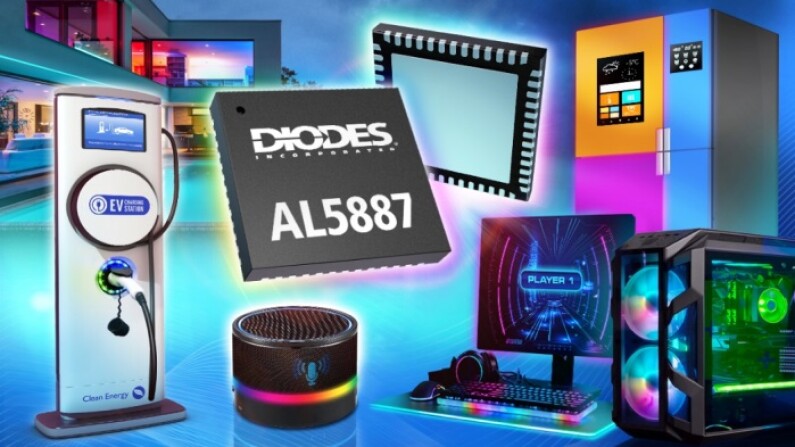How Multi-Channel Linear LED Drivers Transform Color Mixing and Dimming

By Allan Lin, LED Lighting Business Unit Manager
The adoption of LEDs has revolutionized lighting across a huge range of applications, with massively reduced power consumption and increased reliability.
One challenge with LEDs is that a single die can only emit light of one color. To achieve full color lighting, three or four LEDs must be used and bonded within one package together—in colors of red, green, blue, and white (RGBW).
With groups of three LEDs acting together, the next step is to control the brightness and colors of each LED independently, which produces a full range of mixed colors. This is achieved by an electronic device called an LED driver, which is a programmable device that can vary the duration for each cycle of time (duty cycle) and amplitude (peak) of current supplied to each LED it controls. To achieve the color mixing, the driver also handles channel/module independent color mixing and brightness control registers for the LEDs.
This kind of color mixing, controlled by an LED driver, is a popular choice in many applications such as smart home appliances, infotainment center displays, and computer gaming hardware. The LEDs may be used for informative displays, backlighting, illumination, decorative applications, or status indicators for device conditions. For example, a simple change from red to green can provide an easy way for the user to know when charging is complete, such as in electric vehicles (EV).
To help meet these kinds of requirements, Diodes Incorporated has introduced the AL5887, a 36-channel linear RGB LED driver. The device has an internal 12-bit pulse-width modulation (PWM) for color and brightness control, and its industry-standard SPI and I2C dual digital interfaces give customers the flexibility to use their preferred connectivity and programming option.
The AL5887 provides a simple way of driving up to 12 RGB LED modules or 36 single-color LEDs. It delivers wide color depth with a large dynamic range of brightness and can handle complex color mixing requirements. It is aimed at multi-LED applications including smart home appliances, EV charging status indicators, EV charging stations, signage display, and the internet of things (IoT).
The driver uses an innovative dimming technology to improve channel-to-channel current accuracy and matching, which results in precise color mixing and uniform color distribution. Dimming and brightness control is handled by an internal 6-bit register. 12-bit PWM capability for each channel, programed to the PWM registers, controls a wide range of PWM duty cycles from 100% down to 0.03%.
To ensure reliability and safety, the AL5887 provides comprehensive built-in protection and fault-diagnosis features. These include short-circuit and open-LED protection as well as overtemperature shutdown with pre-OTP warning flagged in registers, which are accessible through a serial peripheral interface.
The AL5887 provides an independent color-mixing and brightness register per channel, which enables the user to perform sophisticated color mixing. Two external hardware address pins allow up to four devices to be connected in I2C mode. The AL5887 also offers ultra-low shutdown and IQ power-saving mode with easy software programming.
An internal 16MHz oscillator means that external high-precision clock synchronization is not needed, thus saving on PCB layout and bill of materials (BOM) cost. The driver IC is provided in a wettable flank QFN, 6mm x 6mm, 52-pin, durable and lightweight package with an exposed pad for better thermal dissipation and solderability.
With consumers increasingly expecting higher display resolution and quality with precise control of LED color and brightness, the AL5887 linear LED driver provides the programmability and precision control needed by system design engineers.
The Diodes logo is a registered trademark of Diodes Incorporated in the United States and other countries.
All trademarks are the property of their respective owners.
© 2024 Diodes Incorporated. All Rights Reserved